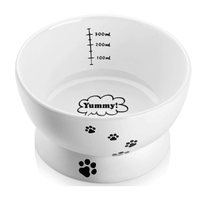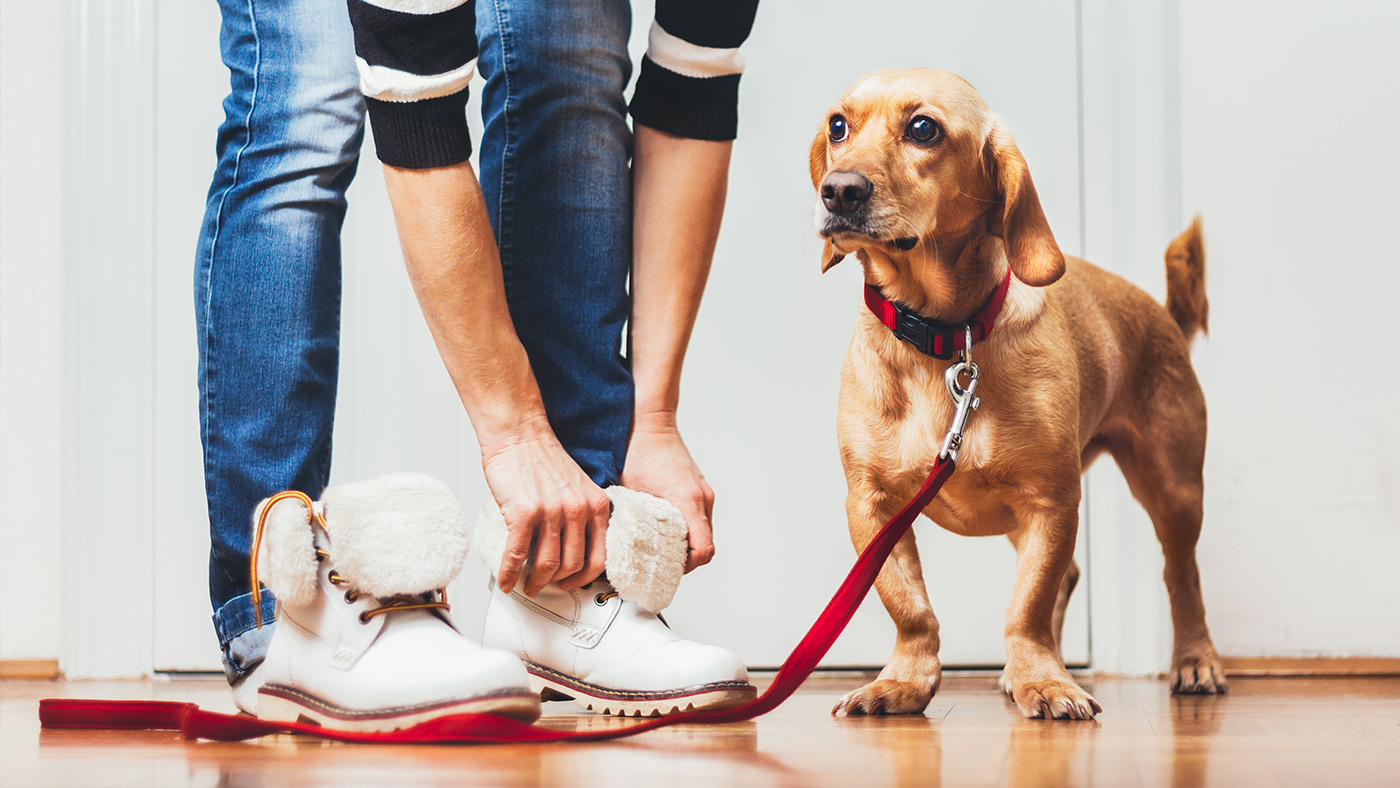How much water should my dog drink?
We answer, ‘How much water should my dog drink?’
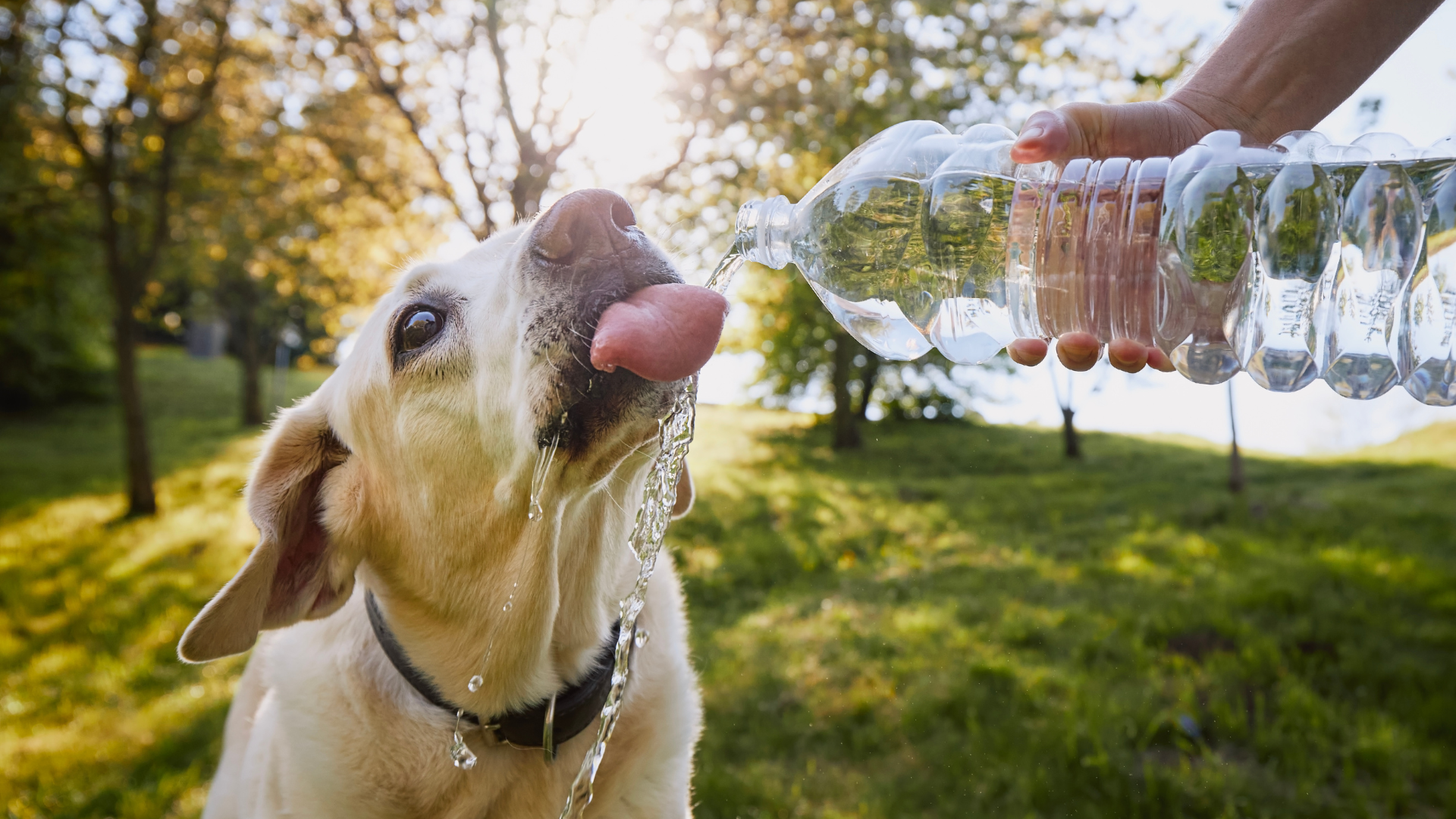
If you’re a pup parent then you’ve probably wondered, ‘How much water should my dog drink?’ at least once. We know it’s important for their health, but sometimes it can be tricky to know what’s normal and how to monitor their intake.
If your dog isn’t drinking enough, then it’s worth investing in one of the best pet water fountains which can help to encourage them. They keep the water cool, clean, and free from impurities, and can also reduce unwanted splashes and spills.
Water is vital for essential bodily functions, like digestion and temperature regulation, but it’s often overlooked. Below, we’ve explained how much water your dog should be drinking and what to do if they’re not having enough. We’ve also revealed why they might be drinking less, how to spot dehydration in dogs, and the importance of drinking enough. Let’s dive in:
How much water does your dog need?
Just like us humans, 70% of your dog’s body is made up of water. How much water your dog needs to maintain that percentage will depend on its size, age, and activity level. According to Dr. Jennifer Larsen, professor of clinical nutrition in the Department of Veterinary Medicine at UC Davis, a general rule of thumb is that a dog should drink 1 ounce of fluid per pound of body weight. That means a 10-pound dog needs to lap up around 10 ounces each day, while a 100-pound canine needs 100 ounces.
If you have a very active dog, live in a hot climate, or your dog is lactating, it will need more than a dog who is sedentary or who lives in a colder climate. Panting increases the need for water, as does exertion, but make sure you only give a little bit of fluid at a time to prevent bloating.
Puppies tend to consume more water than adult dogs, requiring around ½ cup every two hours, but they require careful supervision to ensure they’re not drinking too quickly. For dogs who primarily eat a diet consisting of the best wet dog food, less water is needed as these dishes are moisture-rich. Look for low-sodium options as too much salt will increase their fluid needs.
Why is water important for dogs to drink?
Water facilitates every metabolic process that occurs in your dog’s body, so getting the right amount is vital for their wellbeing. From concentrating when you’re training them to digest their food, your canine companion needs plenty of fluid to function optimally, both physically and mentally.
One of the most important roles water plays is helping to flush toxins through the body. Water transports oxygen into the cells while also clearing out harmful toxins, moving them into the kidneys where they’re filtered and eliminated. When your dog isn’t getting enough fluid, these toxins can become absorbed into the bloodstream, leading to illness.
Water is needed for panting and sniffing too. While dogs will often charge off into the ocean or leap into a river or pool when they’re feeling hot, they rely on panting to keep them cool when other options aren’t available to them. This process sees them exhaling and releasing water through respiration to help regulate their body temperature, increasing their need for fluids.
Water also keeps their noses moist, enabling them to better detect scents. While this isn’t as much of an issue for dogs whose primary role is as a companion animal, it’s vital for those serving as search and rescue, police, or military working dogs.
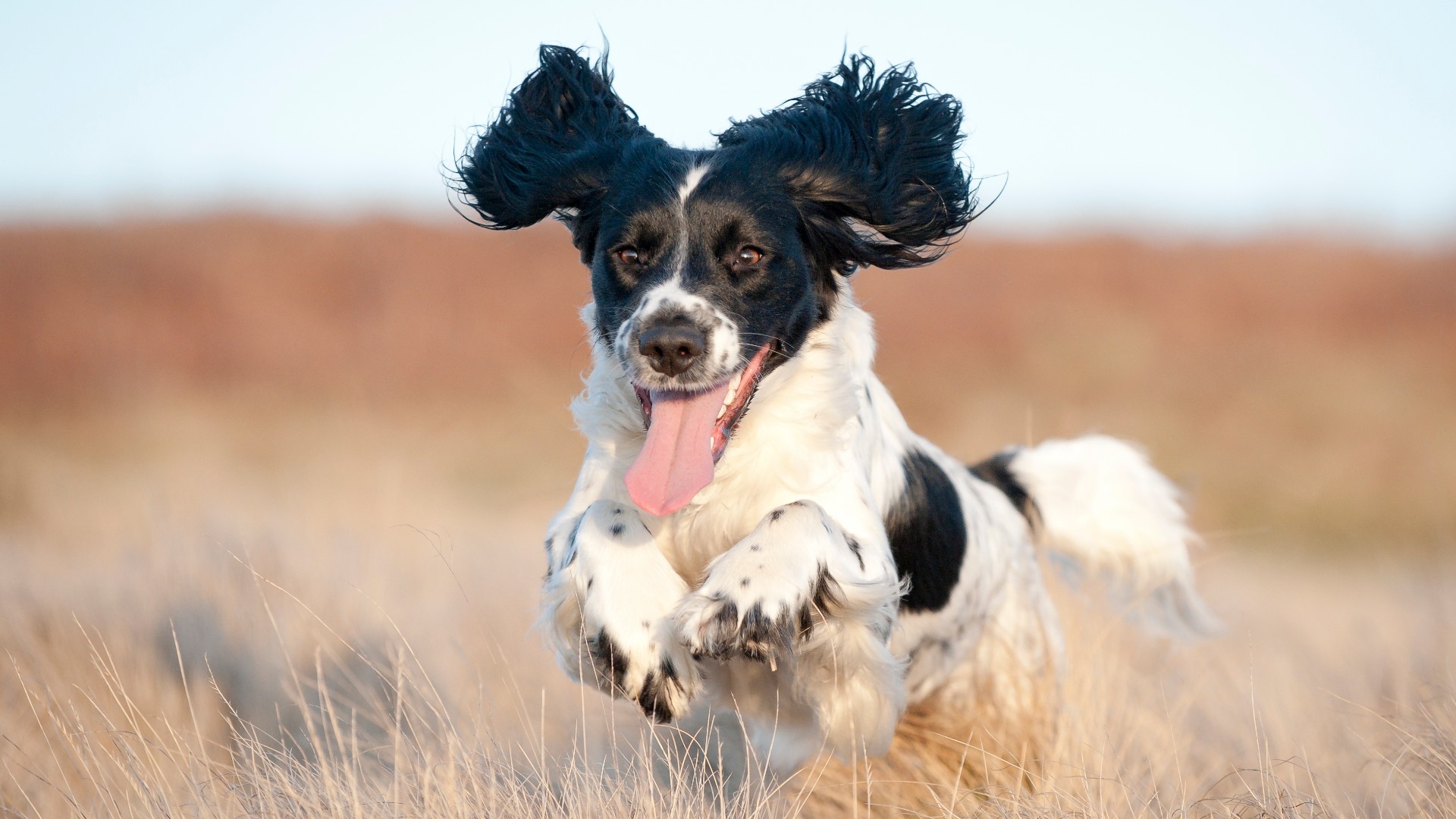
Why is my dog drinking less?
If you’ve noticed a reduction in the amount of water your dog is drinking, there could be several reasons why. While dogs are generally better than cats at lapping up their fluids, changes in their environment, the weather, or their health can all contribute to them drinking less.
Unfamiliar or new places can alter a dog’s drinking habits. Dogs have super sensitive noses and when they smell a water source they’re not used to or a new bowl or fountain, it can take time for their genetic makeup to register the water as being safe to drink.
The changing seasons are another prime reason your dog might not be drinking as much as usual. Many pet parents worry when they notice their canine companion suddenly stops drinking as much in the fall as they were in the summer. It’s normal for the cooler weather to leave your dog feeling less thirsty, so as long as they’re still consuming some fluid throughout the day, there’s generally no cause for alarm.
If you notice that your dog’s decreasing fluid intake is accompanied by symptoms such as lethargy, loss of appetite, or other changes in behavior, we recommend you chat things over with your vet. There may be a bladder or urinary tract infection that you’re not aware of or an issue with the kidneys.
Other possible causes of not drinking enough water include anxiety, dental issues, or previous negative drinking experiences. The latter can be common in rescue dogs who may refuse to drink out of the same kind of water bowl they had at the shelter. Training a rescue dog to drink enough each day can take a little longer than with other dogs, but it’s well worth the investment.
What do I do if my dog isn't drinking enough water?
Why is my dog not drinking water? Even if you provide enough water for your furkid to swim laps in, some dogs just won’t drink enough if left to their own devices. The good news is, there’s plenty you can do to encourage them.
- Ice cold water can be off-putting and is painful for dogs with dental issues, so ensure you serve room temperature water.
- Some dogs can be particular about the type of water bowl they drink from. Play around with stainless steel, ceramic, and glass to see if your furkid has a preference.
- Wash the water bowl daily and make sure the water is always clean and fresh.
- Invest in a water fountain, which many dogs find more enticing than a bowl.
- Provide multiple water sources, both inside and outside.
- Incorporate wet food into their diet.
- Change the location of the water bowl to see if that makes a difference, as some dogs may be picky about the location.
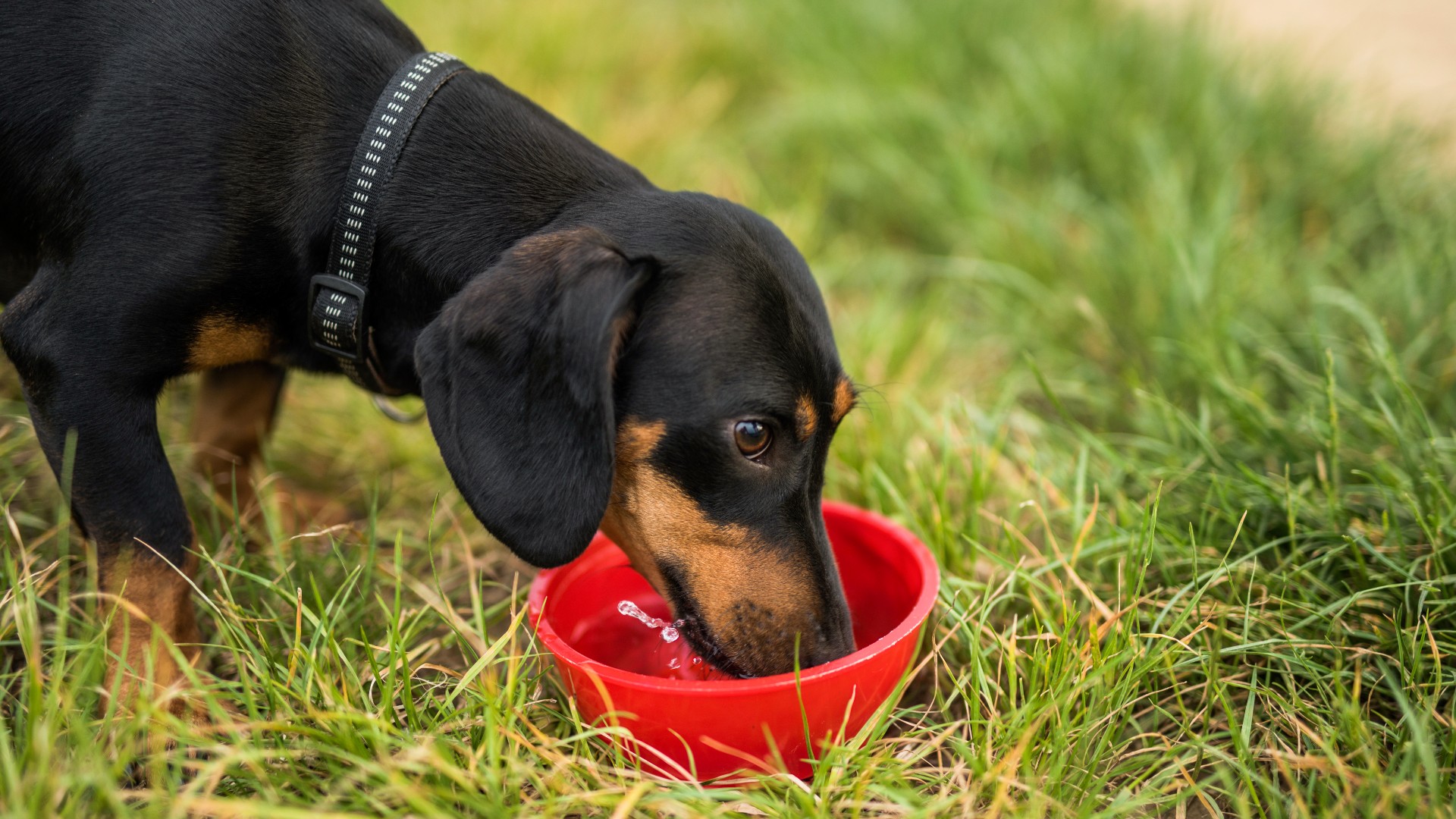
The crew over at Hill’s Science have a few additional sneaky tips that can help your dog to drink more, with Dr. Sarah Wooten suggesting flavoring the water with a small amount of tuna juice, bone broth, or chicken broth, to make it more enticing. If that fails, adding it to ice cubes can make for a fun and hydrating snack in the warmer months. Praising your dog when you see them drinking and rewarding them with the best dog treats can also work wonders.
How do you know when your dog is dehydrated?
Dehydration can happen quickly if your dog is losing more water than they’re taking in. When this happens, both blood flow and the volume of fluids being moved around the body are reduced, which compromises the delivery of oxygen to your dog’s organs. Dehydration in dogs also causes the body to lose electrolytes, such as sodium and potassium, which are vital for muscle and nerve function.
Thankfully, the symptoms of canine dehydration are easy to spot if you know what to look for. According to Dr. Jerry Klein, chief vet for the American Kennel Club, symptoms of dehydration include:
- Loss of skin elasticity
- Loss of appetite
- Vomiting with or without diarrhea
- Reduced energy levels and lethargy
- Panting
- Sunken, dry-looking eyes
- Dry nose
- Dry, sticky gums
- Thick saliva
A skin elasticity test is the easiest way you can check for dehydration in your dog. Dr. Klein recommends gently holding some of your dog’s skin near his shoulder blades, raising it up, and then letting it go. If your dog is well-hydrated, the skin will quickly spring back to its original position. If your dog is dehydrated, the skin will take longer to fall back into place.
“It’s a good idea to first test your dog’s skin when you are sure he’s well hydrated so that you have a base for what normal skin elasticity feels like. This is especially important for owners of wrinkly breeds, such as Bulldogs, because their skin may not be as elastic, even under normal conditions,” says Dr. Klein.
Checking your dog’s gums is another quick and easy home test that you can do. Press your finger gently against your dog’s gums and then remove your finger. If your dog is well hydrated you’ll notice that there’s a white spot on the gum when you remove your finger that quickly returns to being pink. In dehydrated dogs, this white spot stays present for longer.
Speak to your vet if you’re worried your dog might be dehydrated and take them in immediately if their dehydration is accompanied by vomiting or diarrhea, you’re concerned they may have heatstroke, or you’re worried they may have an underlying health issue.
What if your dog is drinking too much water?
As important as it is to avoid dehydration, too much of a good thing can also be problematic. Water intoxication often happens when dogs are swimming, water-retrieving, or getting a bit too enamored with the water hose or garden sprinkler. When a dog drinks too much water, sodium levels outside the cells are depleted, causing the body to increase fluid intake inside the cells to rebalance itself.
Symptoms of water intoxication include:
- Lethargy in dogs
- Bloating
- Vomiting
- Loss of coordination
- Restlessness
- Drooling
- Pale gums
- Dilated pupils
- Glazed eyes
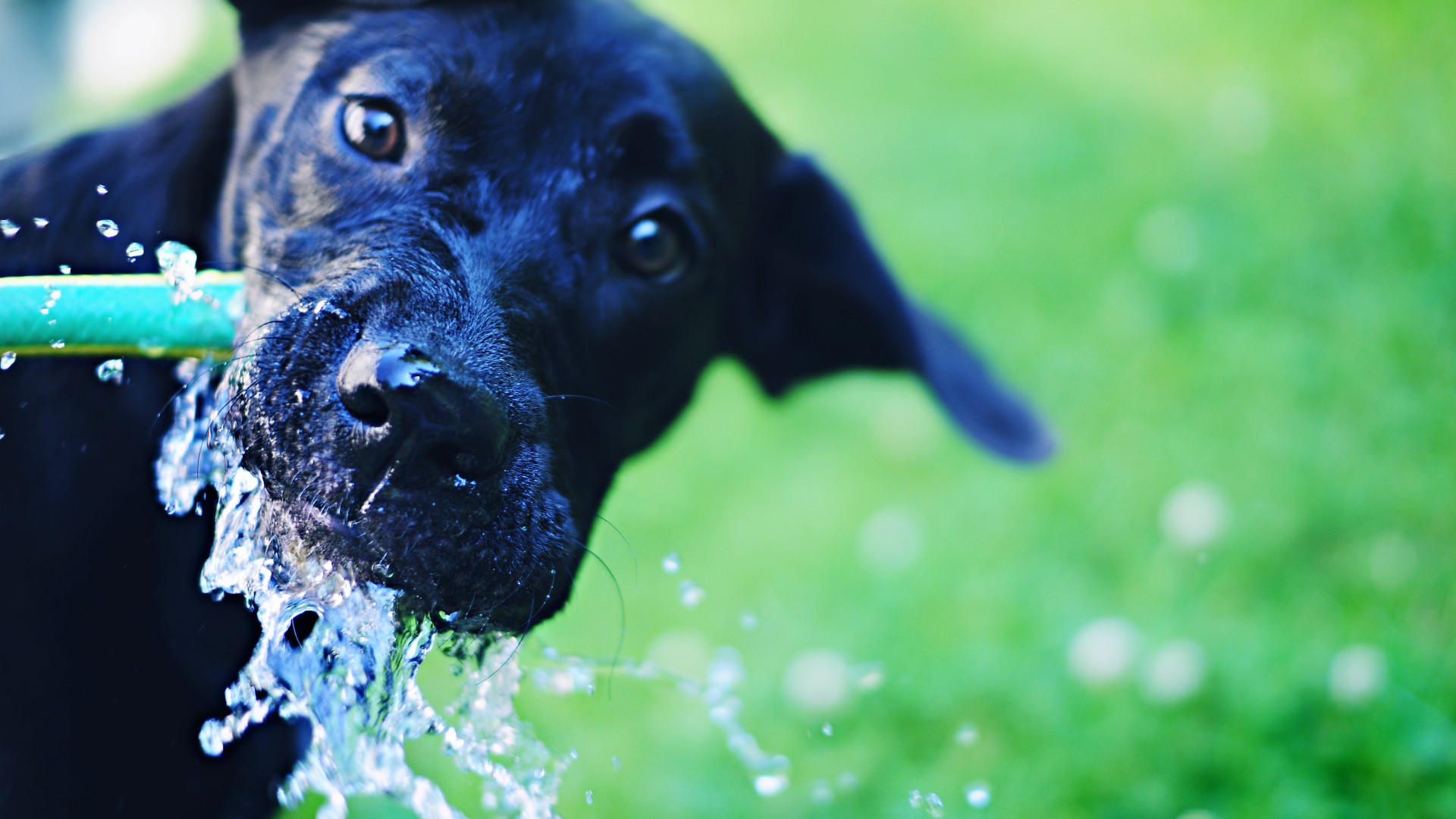
Water intoxication can be fatal, so if you suspect it, visit your vet immediately. They’re often able to administer drugs that can hasten the removal of fluid from the body.
There can also be less immediately severe causes of increased fluid intake, including canine diabetes, kidney or liver disease, Cushing’s syndrome, or infection. If you notice your dog drinking or urinating more than usual, speak to your vet who will be able to run tests and advise you on the best course of treatment. This guide has more information on increased thirst in dogs.
You might also find helpful: How much should I feed my dog? and Can dogs drink coconut water?
Y WHY Water Bowl with Measuring Lines
Thanks to the measuring lines, you’ll be able to keep an eye on how much your dog is drinking throughout the day. It has an elevated design to reduce neck strain and an anti-slip bottom to prevent spills. It holds up to 12.5oz of water so it’s best for smaller dogs.
PetsRadar Newsletter
Get the best advice, tips and top tech for your beloved Pets

Kathryn is a freelance writer who has been a member of the PetsRadar family since it launched in 2020. Highly experienced in her field, she's driven by a desire to provide pet parents with accurate, timely, and informative content that enables them to provide their fur friends with everything they need to thrive. Kathryn works closely with vets and trainers to ensure all articles offer the most up-to-date information across a range of pet-related fields, from insights into health and behavior issues to tips on products and training. When she’s not busy crafting the perfect sentence for her features, buying guides and news pieces, she can be found hanging out with her family (which includes one super sassy cat), drinking copious amounts of Jasmine tea and reading all the books.
- Megan MilsteadStaff Writer
